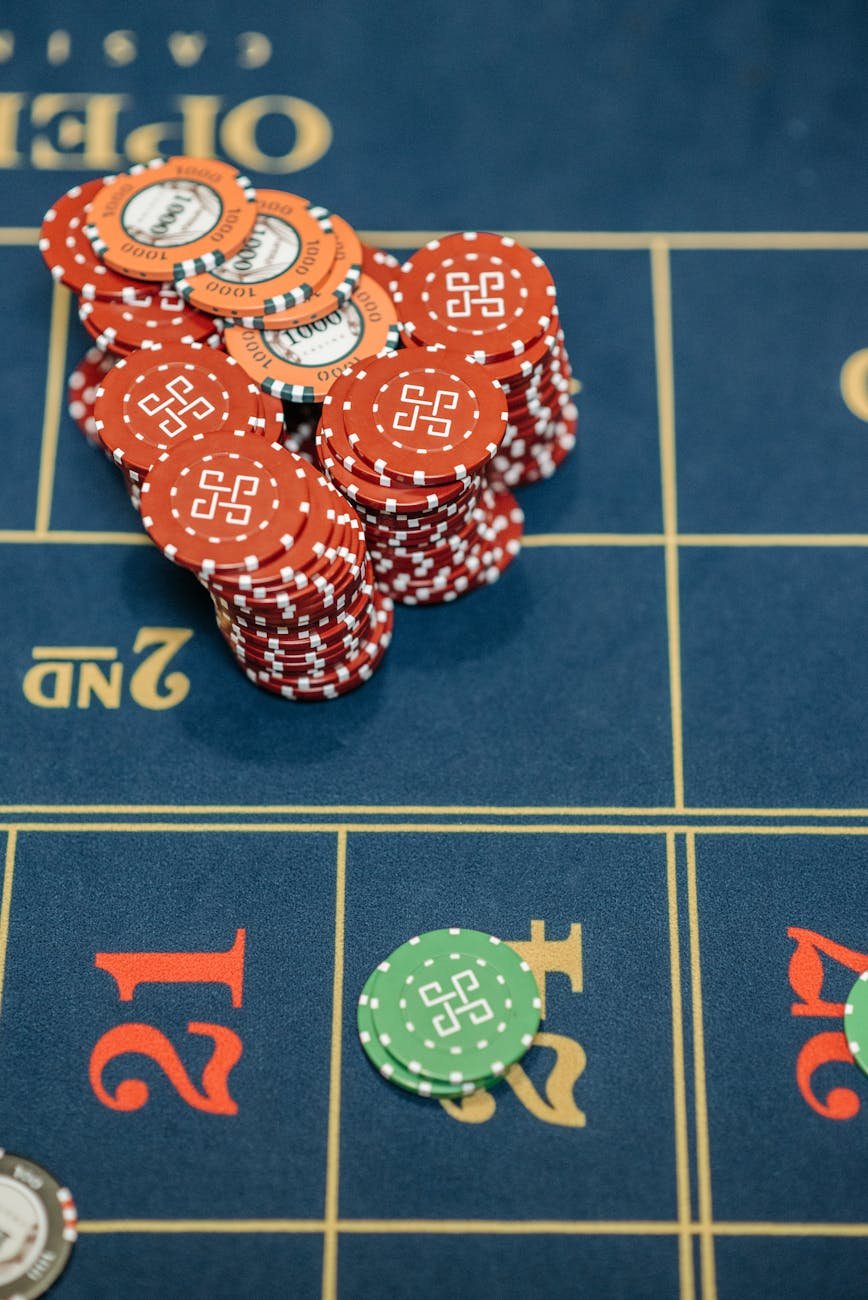Gaming Branding Strategies
The gaming world has seen a shake-up in how brands market themselves, thanks to digital marketing’s rocket-paced growth. At the heart of these new strategies? Social media’s influence and the skyrocketing use of influencer marketing. These elements are key in showing brands how to connect with folks like never before.
Impact of Social Media
Social media has flipped the script on traditional branding, making it so much easier for game creators to chat with players directly. Platforms like Twitter, Instagram, and TikTok aren’t just spaces where cat videos go viral; they’re where games find their fans. These platforms help brands build a buzz and grow communities around their games.
Check out the main social media hangouts for gamers, based on how much people are engaging:
| Social Hotspots | People Hooked (%) |
|---|---|
| 20% | |
| TikTok | 24% |
| 18% | |
| 14% |
When folks share stuff about games, it boosts the brand’s vibe and makes it feel real. Marketers can use social media for more than just ads; it’s also great for building groups and stirring up group chats about games. Sprinkling in some gaming-related campaigns can make user experiences more exciting and build loyalty.
Rise of Influencer Marketing
Social media’s swing in power highlights the boom of influencer marketing. By 2024, it’s set to hit a wallet-busting $24 billion, spotlighting its growing clout in gaming circles. Influencers, with their diehard followers, influence shopping choices and boost brand attention like nothing else.
Here’s why influencers matter for sales:
- Every month, 49% of folks are swayed to buy something because an influencer gave it the nod.
- 86% ended up buying stuff because an influencer showed it off at least once a year.
Influencer marketing shines through by reaching more eyeballs, spreading brand buzz, and getting people to click ‘buy’ more often. These influencers have a trusted bond with their fans, serving as genuine voices to the crowd. If you’re curious about diving deeper into working with influencers, take a gander at resources focusing on influencer-game collabs.
As gaming brands strive to step up their marketing, social media and influencer partnerships are crucial for keeping fans hyped and growing the biz. For a treasure chest of more tips on marketing games, don’t miss our piece on gaming promotion tricks.
Leveraging Influencers in Gaming
Gaming’s booming, and influencer marketing ain’t just a buzzword anymore. These days, brands are buddying up with digital personalities who have the knack for building trust and getting folks hyped within their communities.
Role of Nano-Influencers
What’s a nano-influencer, you ask? These folks have a small but mighty following, usually between 1,000 and 10,000. And in 2024, a good 44% of brands are cozying up to them. Why? They churn out personal, relatable content and maintain close-knit connections with niche groups, all without blowing big bucks Sprout Social. It’s like inviting people to a small, friendly gathering rather than a big, roaring party. More often than not, folks at such gatherings tend to be really engaged.
In the gaming world, this makes perfect sense. Nano-influencers help brands get up close and personal with specific gamer groups, making everything feel more genuine. It’s a smart move for gaming marketers who wanna keep the conversation going and loyalty strong.
Influencer Marketing Benefits
What do influencers bring to the table? Loads, especially in gaming. Sure, they boost brand recognition and get conversations going. Nearly half of us have probably bought something each month ’cause an influencer gave it their stamp of approval, and 86% made at least one purchase each year Sprout Social. These numbers are hard to ignore, especially when the gaming scene is so lively.
Influencer marketing has a shiny $24 billion forecast for 2024—a big chunk of the digital marketing pie Sprout Social.
Check out what else makes influencers valuable in gaming:
| Benefit | Description |
|---|---|
| Keepin’ It Real | Influencers bring a vibe that folks relate to and trust. |
| Audience Interaction | Their content gets people talking and keeps brands in the game. |
| Budget-Friendly | Teaming up with nanos and micros doesn’t drain the wallet. |
| Hitting the Mark | They zero in on specific groups, getting your message to the right eyes. |
For game industry players, hopping on the influencer express is smart. Trust in influencers climbed from 51% in 2019 to 61% in 2023. Clearly, more people are banking on these brand partners The Power of Influencer Marketing: Collaboration, Brand Awareness and Authenticity. For game makers aiming to jazz up their marketing mojo, influencers are a golden ticket.
If you want to dig deeper, why not peek at our pieces on influencer marketing in gaming and gaming marketing strategies? They’re packed with juicy insights and success stories that’ll give you the lowdown on nailing those marketing goals.
Noteworthy Gaming Marketing Strategies
Nintendo’s Clever Play
Nintendo has a knack for thinking outside the box when it comes to gaming marketing. They’re less about souped-up hardware and more about crafting fun and original gaming experiences. Take the Game Boy in 1989, for example. It didn’t just change handheld gaming with its technical features but also wowed us with games like “Tetris” that kept folks hooked for hours. Read more about it on Brand Credential.
Fast forward to 2006, and the Nintendo Wii mixed things up with its motion control, getting not just the die-hard gamers but also families and newbies on board. Again, check it out on Brand Credential. Their focus on building emotional ties with players through savvy marketing has pushed others in the game industry to take a page from their playbook, proving that a little heart goes a long way in building both industry stripes and fan loyalty.
Brand Success Stories in Gaming
Many gaming brands have aced their marketing game, boosting their visibility and fan interaction big time. Look at the success stories of games like “Fortnite” by Epic Games, “Red Dead Redemption 2” by Rockstar Games, “Assassin’s Creed” by Ubisoft, and “Pokemon GO” by Niantic. They show how smart storytelling and user engagement can strike a real chord with fans (Polydin).
| Game | Developer | Standout Marketing Moves |
|---|---|---|
| Fortnite | Epic Games | Inventive events and collaborations |
| Red Dead Redemption 2 | Rockstar Games | Thrilling trailers and deep storytelling |
| Assassin’s Creed Series | Ubisoft | Fan-centric events and story-rich campaigns |
| Pokemon GO | Niantic | Real-world experiences and team play |
These gaming giants know their fans inside out, making them feel part of something bigger. Their knack for building captivating experiences not only heightens the gaming thrill but also locks down loyal followers. This becomes a gold standard for others in the gaming biz who want to nail effective gaming marketing strategies.
International Marketing in Gaming
Getting the international marketing strategy right is a dealbreaker for gaming companies. If you’re aiming to shine globally, a well-placed strategy keeps your brand glistening across different cultures and languages.
Successful Global Campaigns
Out there in the wild world of gaming, some companies have hit the jackpot with their global marketing campaigns. They’ve shown some nifty tricks on how to speak the international lingo—both literally and figuratively.
| Company | Campaign Highlights | Target Areas |
|---|---|---|
| Coca-Cola | Reached communities by funding helpful projects like clean water sites and providing meals during Ramadan for kids. | Everywhere |
| Innocent Drinks | Kept a friendly and recognizable brand presence that speaks the same across 15 European countries, boosting visibility. | Europe |
| Airbnb | Rolled out the “Made Possible by Hosts” series, spotlighting genuine tales to tighten community bonds. | Worldwide |
| Spotify | Organized tunes by vibes and types, syncing with global lifestyles. | Worldwide |
These campaigns highlight the power of tuning into cultural quirks while sticking to a solid brand vibe—vital for marketing pushes that span continents. Curious souls may want to peek at loyalty programs with a gaming twist for more inspiration.
Importance of Consistency
When gaming companies are thinking big, consistency in their branding is king. It builds a bridge of trust with gamers everywhere, making them feel snug and familiar with the brand.
Showing the same face and tone across platforms means consumers get the same vibe, no matter where they are. Innocent Drinks does this flawlessly, ensuring that their tone cuts across globally just right, which gets them noticed and trusted (HubSpot).
Keeping a steady hand with brand consistency won’t just earn trust; it’ll stoutly bolster a company’s standing in far-off markets. These efforts carve out sharper marketing campaigns crucial for standing out in the cutthroat gaming scene. Consistency in messaging is key, just as illustrated by Airbnb, bonding hosts and guests with content that feels like community and kin (HubSpot).
If you’re in the hunt for more smart pointers on promotions and savvy marketing ploys in the gaming world, you might want to have a gander at video game marketing tactics or online gaming advertising techniques.
Evolution of the Gaming Industry
The gaming scene has flipped the script over the years, shaking up how brands and marketers go about their business. Two major forces at play here are esports and virtual reality.
Rise of Esports
Esports isn’t just about playing video games anymore; it’s a whole new sporting event. This isn’t your average Saturday night Mario Kart—esports has turned gaming into a legit profession with big crowds and even bigger bucks. Back in 2022, the esports business was worth about $1.4 billion, and it’s projected to skyrocket to roughly $6.8 billion soon. COVID-19 gave this boom a real kick in the pants as folks were glued to their screens for some form of fun (AnswerLab).
With so much cash flying around, brands and media companies have jumped into the fray. Broadcasting rights are scooped up like hotcakes, making games a new form of prime-time thrill. Pro players are not just gaming for gigs—they’re landing on the big stage and cashing in. Novel esports marketing campaigns are making waves too, mixing the thrill of competition with smart ads and broadening the appeal to this new age.
| Year | Global Esports Market Size (USD) |
| – | – |
| 2022 | 1.4 billion |
| 2023 (projected) | 2.1 billion |
| 2025 (projected) | 6.8 billion |
Impact of Virtual Reality
Virtual reality, or VR, has cranked the immersion knob way up, pulling gamers into worlds like never before. You’re not just watching the action—you are in it. Every move matters, crafting new tales as you go along, and that means players are hooked like never before.
The VR craze has thrown a curveball at marketers. As more players slap on those headsets, marketers need to up their game too. Developers can weave in gamified loyalty programs to keep players coming back for more. It’s a brave new world out there, and highlighting the VR experience with video game marketing tactics is where it’s at.
In the end, esports and VR have flung open the door to fresh opportunities in gaming marketing. Folks in the field have gotta stay sharp, seizing these new paths to hit their audience right where it counts. For more on how to navigate these new waters, check out our piece on gaming marketing strategies.
The Intersection of Gaming and Media
The gaming industry and traditional media are partnering up quicker than a gamer can rage-quite. Catching this wave is a smart move for developers and marketers looking to hook more players and widen their fanbase.
Gaming in Video Streaming Services
TV is no longer just for binge-watching. Video streaming heavyweights like Netflix are getting in on gaming action, rolling out all sorts of narrative-drenched games. If you think you’ve seen it all, brace yourself—nearly 90 games are in queue, with titles like Hades and a sneaky caper inspired by Money Heist (AnswerLab).
These platforms aren’t just dabbling; they’re serving up new chances for brands to snag players already glued to their screens.
| Streaming Service | Games in Development |
|---|---|
| Netflix | 90+ (e.g., Hades, Money Heist) |
The table above says it all: streaming’s going big on games, turning your TV into a back-and-forth between watching and playing—media and gaming all-in-one.
Convergence of Gaming and Sports
Gaming and sports are teaming up like Batman and Robin, crafting an experience that mixes the thrill of competitive play with top-shelf media pizzazz. Big names in media are snagging broadcasting rights for esports, boosting gaming’s visibility in the mainstream. This means players can go pro and cash in while playing their favorite games (AnswerLab).
Esports is rewriting the marketing playbook in gaming. With sports franchises fielding esports teams, there’s a goldmine of esports sponsorship chances waiting for savvy marketers.
| Esports Impact | Example |
|---|---|
| Increased Media Exposure | Major media companies investing in broadcasting rights |
| Career Opportunities | Professional gaming competitions |
Developers and marketers need to be on their toes, adjusting their gameplan to make the most of these new trends. By checking out gaming marketing strategies, they can stay ahead in this gaming-media mashup.
Video Game Marketing Essentials
Cracking the code for a hit video game isn’t just about epic graphics or thrilling plot twists—it’s about smart marketing. Here, we’ll chat about what’s really needed to make your game a hot topic, and how you can put together a killer plan that gets your game buzzing.
Key Elements for Success
Making your mark in the gaming world is a bit like cooking up a stew—it needs the right ingredients to turn out just right. These elements are the backbone of making a game stand out, whether you’re the brains behind the game or the one spreading the word.
| Key Elements | What’s the Big Deal? |
|---|---|
| Knowing Your Crowd | Get the scoop on who’s playing and what they crave—this way, your marketing vibes hit home. |
| Breaking It Down | Slicing the big gaming pie into smaller pieces lets you zoom in and focus your marketing mojo. |
| Eye-Candy Visuals | Sharp looks grab eyeballs and make your ads pop. |
| Solid Brand Image | Being consistent builds trust and gets folks talking about your game. |
| Social Media Buzz | Riding the social wave on places like Instagram or Twitter can skyrocket your game’s buzz. |
| Influencer Push | Having influencers chat about your game is like getting a gold star of approval in the gaming club. |
| Launch Timing | Bringing your game to life at just the right moment can make all the difference. |
| Keep It Real | Being upfront with gamers builds a relationship that can last longer than just one release. |
Stick to these essentials, and you’ve got the recipe for a marketing strategy that works like a charm.
Developing a Marketing Strategy
Putting together a winning strategy isn’t rocket science, but it does need some focus. Here’s how to make sure your game gets noticed:
Set Goals in Stone: Define what you want your marketing to achieve. Whether it’s bringing in more downloads or just getting fans to follow, know what you’re aiming for.
Get to Know Your Fans: Dig into who’s gonna play your game. Their likes and dislikes can guide where you take your marketing.
Highlight What’s Cool: Figure out that special thing that makes your game a must-play and put it front and center.
Pick the Right Spots: Choose where to shout out about your game. Social media, gaming conventions, or streaming platforms—your game should be where the players are.
Stretch Those Dollars: Plan out how your money will be spread across your marketing efforts so nothing’s wasted.
Keep Score: Decide on what success looks like. Keep an eye on those numbers and see if what you’re doing is working.
With these steps, the gaming wizards in marketing will have a roadmap that gets everyone talking about your game. For more tips and tricks, check out our article on video game marketing tactics.
So, there you have it. A game plan—pun intended—for snagging attention and building up that player base. With a good strategy, your game could be the next big thing.
Future Trends in Video Game Marketing
As gaming keeps changing, so does the way folks market these virtual adventures. The ever-advancing world of technology, along with the rise of artificial intelligence (AI) and social media, is giving the gaming marketing playground a complete makeover. Let’s peek into what’s next.
Technological Advancements
Virtual reality (VR) and augmented reality (AR) are seriously shaking things up, way beyond what anyone could have guessed. It’s not just about playing anymore; these innovations plunge players right into the heart of the action. And when it comes to marketing, well, get ready—data analytics and AI are stepping in to serve up content that’s almost like it was meant just for you. This one-on-one vibe aims to reel players in and keep ‘em around for the long haul.
Here’s a quick rundown of how these techs are changing the game:
| Technology | How It Changes Gaming Marketing |
|---|---|
| Virtual Reality (VR) | Crafting captivating experiences that build emotional bonds. |
| Augmented Reality (AR) | Bringing digital bits to real spaces, making promos more hands-on. |
| Data Analytics | Spots patterns and preferences, customizing outreach for every player. |
| Artificial Intelligence (AI) | Tailors campaigns, enhancing the gaming journey on various platforms. |
| 5G Tech | Boosts cloud gaming and smooths online play with lower delays. |
These innovations open up a world of new possibilities for connecting with fans and growing the gaming scene. For more tricks of the trade, check out gaming marketing strategies.
The Role of AI and Social Media
AI is pulling out all the stops in gaming by refining the way marketing campaigns are run. It helps marketers focus precisely on what players want by sifting through mountains of data faster than you can say “power-up!”
And let’s not forget social media’s role as it becomes a massive player in keeping the gaming community buzzing. Whether it’s connecting with players, building strong communities, or launching interactive campaigns with big personalities, these platforms make it all happen, and quickly!
Here’s how social media shakes up gaming marketing:
| Feature | How It Impacts Marketing |
|---|---|
| Audience Engagement | Lets marketers chat and get feedback straight from the gamers. |
| Content Sharing | Supercharges campaigns by riding on user-shared content. |
| Influencer Partnerships | Taps into trusted voices in key gaming communities. |
| Real-Time Analytics | Offers instant insights to tweak campaigns based on player reactions. |
Game marketers should think about using AI-powered tactics to beef up their social media plays, tapping into influencers to super-size their strategies, as explained in influencer marketing in gaming.
Harnessing these emerging trends enables developers and marketers to build plans that keep pace with the tech leaps and player connection methods shaping the gaming arena.





















